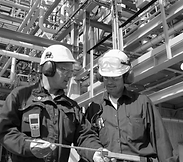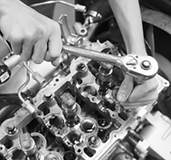Engineering and Technology Quarterly Reviews
ISSN 2622-9374




Published: 01 June 2023
Microplastics as a Serious Challenge in Marine Environment
Hasan Karimy
Bamyan University, Afghanistan

Download Full-Text Pdf
10.5281/zenodo.7990680
Pages: 74-78
Keywords: Degradation, Environment, Industry, Marine ecosystem, Microplastics
Abstract
Today, the production of plastic materials has multiplied with the growth of the population and the development of industry in the world. Microplastics are released into the sea environment as a result of the decomposition of plastic materials and are carried into the water by wind or waves. Unlike small inorganic particles in seawater, microplastics increase the concentration of organic pollutants by splitting. Microplastics are ingested by marine life and have adverse effects on them. The potential degradation of these substances in the marine ecosystem is still being quantitatively evaluated and modelled. Due to the increasing levels of pollution by plastics in the seas, a better understanding of the effects of microplastics in the ocean food web is of great importance.
References
Al-Oufi, H., McLean, E., Kumar, A. S., Claereboudt, M., and Al-Habsi, M. (2004). The effects of solar radiation upon breaking strength and elongation of fishing nets. Fisheries research, 66(1), 115-119.
Andrady, A. L. (1994). Assessment of environmental biodegradation of synthetic polymers. Journal of Macromolecular Science, Part C: Polymer Reviews, 34(1), 25-76.
Andrady, A. L. (2011). Microplastics in the marine environment. Marine pollution bulletin, 62(8), 1596-1605.
Asharani, P. V., Wu, Y. L., Gong, Z., and Valiyaveettil, S. (2008). Toxicity of silver nanoparticles in zebrafish models. Nanotechnology, 19(25), 255102.
Bowmer, T., and Kershaw, P. (Eds.). (2010). Proceedings of the GESAMP International Workshop on Microplastic Particles as a Vector in Transporting Persistent, Bio-accumulating and Toxic Substances in the Ocean, 28-30th June 2010, UNESCO-IOC, Paris. GESAMP.
Claessens, M., De Meester, S., Van Landuyt, L., De Clerck, K., and Janssen, C. R. (2011). Occurrence and distribution of microplastics in marine sediments along the Belgian coast. Marine pollution bulletin, 62(10), 2199-2204.
Desforges, J. P. W., Galbraith, M., Dangerfield, N., and Ross, P. S. (2014). Widespread distribution of microplastics in subsurface seawater in the NE Pacific Ocean. Marine pollution bulletin, 79(1-2), 94-99.
Eerkes-Medrano, D., Thompson, R. C., and Aldridge, D. C. (2015). Microplastics in freshwater systems: a review of the emerging threats, identification of knowledge gaps and prioritisation of research needs. Water research, 75, 63-82.
Endo, S., Takizawa, R., Okuda, K., Takada, H., Chiba, K., Kanehiro, H., and Date, T. (2005). Concentration of polychlorinated biphenyls (PCBs) in beached resin pellets: variability among individual particles and regional differences. Marine pollution bulletin, 50(10), 1103-1114.
Gregory, M. R. (2009). Environmental implications of plastic debris in marine settings—entanglement, ingestion, smothering, hangers-on, hitch-hiking and alien invasions. Philosophical Transactions of the Royal Society B: Biological Sciences, 364(1526), 2013-2025.
Hu, L., Su, L., Xue, Y., Mu, J., Zhu, J., Xu, J., & Shi, H. (2016). Uptake, accumulation and elimination of polystyrene microspheres in tadpoles of Xenopus tropicalis. Chemosphere, 164, 611-617.
Hund-Rinke, K., and Simon, M. (2006). Ecotoxic effect of photocatalytic active nanoparticles (TiO2) on algae and daphnids (8 pp). Environmental Science and Pollution Research, 13, 225-232.
Karlsson, T. M., Vethaak, A. D., Almroth, B. C., Ariese, F., van Velzen, M., Hassellöv, M., and Leslie, H. A. (2017). Screening for microplastics in sediment, water, marine invertebrates and fish: method development and microplastic accumulation. Marine pollution bulletin, 122(1-2), 403-408.
Koelmans, A. A., Besseling, E., and Foekema, E. M. (2014). Leaching of plastic additives to marine organisms. Environmental pollution, 187, 49-54.
Lithner, D. (2011). Environmental and health hazards of chemicals in plastic polymers and products.
Lovern, S. B., and Klaper, R. (2006). Daphnia magna mortality when exposed to titanium dioxide and fullerene (C60) nanoparticles. Environmental Toxicology and Chemistry: An International Journal, 25(4), 1132-1137.
Lusher, A. L., Welden, N. A., Sobral, P., and Cole, M. (2017). Sampling, isolating and identifying microplastics ingested by fish and invertebrates. Analytical methods, 9(9), 1346-1360.
Mason, S. A., Garneau, D., Sutton, R., Chu, Y., Ehmann, K., Barnes, J., and Rogers, D. L. (2016). Microplastic pollution is widely detected in US municipal wastewater treatment plant effluent. Environmental pollution, 218, 1045-1054.
Meenakumari, B., and Radhalakshmi, K. (1988). Induced photo-oxidative degradation of nylon 6 fishing net twines.
Muthukumar, T., Aravinthan, A., Lakshmi, K., Venkatesan, R., Vedaprakash, L., and Doble, M. (2011). Fouling and stability of polymers and composites in marine environment. International Biodeterioration and Biodegradation, 65(2), 276-284.
Obbard, R. W., Sadri, S., Wong, Y. Q., Khitun, A. A., Baker, I., and Thompson, R. C. (2014). Global warming releases microplastic legacy frozen in Arctic Sea ice. Earth's Future, 2(6), 315-320.
Paerl, H. W., Scott, J. T., McCarthy, M. J., Newell, S. E., Gardner, W. S., Havens, K. E., and Wurtsbaugh, W. A. (2016). It takes two to tango: when and where dual nutrient (N & P) reductions are needed to protect lakes and downstream ecosystems. Environmental science & technology, 50(20), 10805-10813.
Rosse, P., and Loizeau, J. L. (2003). Use of single particle counters for the determination of the number and size distribution of colloids in natural surface waters. Colloids and Surfaces A: Physicochemical and Engineering Aspects, 217(1-3), 109-120.
Ryan, P. G., Moore, C. J., Van Franeker, J. A., and Moloney, C. L. (2009). Monitoring the abundance of plastic debris in the marine environment. Philosophical Transactions of the Royal Society B: Biological Sciences, 364(1526), 1999-2012.
Seltenrich, N. (2015). New link in the food chain? Marine plastic pollution and seafood safety.
Teuten, E. L., Saquing, J. M., Knappe, D. R., Barlaz, M. A., Jonsson, S., Björn, A., and Takada, H. (2009). Transport and release of chemicals from plastics to the environment and to wildlife. Philosophical transactions of the royal society B: biological sciences, 364(1526), 2027-2045.
Voparil, I. M., & Mayer, L. M. (2000). Dissolution of sedimentary polycyclic aromatic hydrocarbons into the lugworm's (Arenicola marina) digestive fluids. Environmental science & technology, 34(7), 1221-1228.
Wang, W., Gao, H., Jin, S., Li, R., and Na, G. (2019). The ecotoxicological effects of microplastics on aquatic food web, from primary producer to human: A review. Ecotoxicology and environmental safety, 173, 110-117.
Zhu, X., Zhu, L., Li, Y., Duan, Z., Chen, W., and Alvarez, P. J. (2007). Developmental toxicity in zebrafish (Danio rerio) embryos after exposure to manufactured nanomaterials: buckminsterfullerene aggregates (nC60) and fullerol. Environmental Toxicology and Chemistry: An International Journal, 26(5), 976-979.



